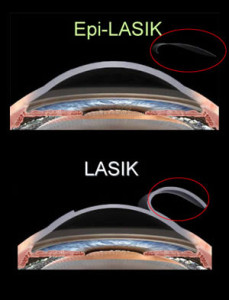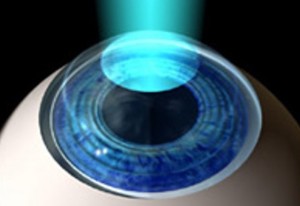Epi-LASIK and LASIK are both eye surgery procedures that aim for the same goal, cure far-sightedness (hyperopia), nearsightedness (myopia), and astigmatism. However, Epi-LASIK is known to be much safer procedure than LASIK. Though complications in the epithelial flap created during LASIK surgery is relatively low, it can possibly cause less than ideal results, or worst permanent vision loss. With Epi-LASIK, the creation of your eyes’ epithelial flap is less risky and, at the same time, the structure of your eye’s cornea is preserved.

Epi-LASIK and LASIK Procedure
Singapore Epi-LASIK doctors create epithelial flap from your eye’s corneal tissue by using a blunt separator. The tool used doesn’t create deeper incision into the corneal layers. After the epithelial flap is removed, a laser is used to sculpt the cornea. In Tony Ho Lasik surgery in Singapore a special contact lens will be placed over the corneal surface to promote faster healing. Since the cornea is not cut, its parts and structural formation stays unharmed and unchanged.
In LASIK, there is a need to cut into your eye’s cornea. A sharp blade is used to create a flap that cuts through the epithelium, down to the cornea. Then, the cornea is reshaped with the use of a laser and the flap made is replaced to its original place. The downside of this procedure is that significant amount of important and healthy corneal tissues are cut, thus, affecting its function and structure. From a practical viewpoint, your cornea with LASIK surgery may heal but not completely and its original strength may never be regained. Moreover, since the flap never heals completely, some complications (e.g. bulging, dislodgement, and ecstasia) may possibly happen in the future.
Advantages
Despite their differences, both of the eye procedures have their own advantages. So in order for you to know what eye surgery to go for, here are some of their corresponding benefits that many Singapore patients and surgeons experienced before, during, and after the eye surgeries.
Epi-LASIK
- The strength and structure of cornea is preserved
- Lesser dry eye problems
- Lesser risk of flap complications
- No risk of flap dislodgement
- Lesser possible need for surgery enhancement
LASIK
- Less discomfort after surgery
- Quick recovery. Some Singapore patients regain functional vision a day after surgery.

Disadvantages
All things have their own down side as well. Both eye surgery techniques have their own set of flaws that every Singapore patient may or may not encounter. The disadvantages stated below are not there to discourage people who want to get their vision corrected, but to let you know of the possible results that you might experience after undergoing your chosen eye surgery.
Epi-LASIK
- Takes a couple of days to a week to regain functional vision
- Slightly more discomfort after the surgery
LASIK
- Frequent dry eye problems
- Cornea may not completely heal and regain its original strength
- High chances of flap complications and epithelial in-growth
- Greater chances of requiring surgical enhancement
- Some Singapore patients complain about thinning and bulging of cornea over time. Though Singapore surgeons do eye screening before proceeding with the surgery, it’s still difficult to predict which patients have the highest possibility of developing this complication.